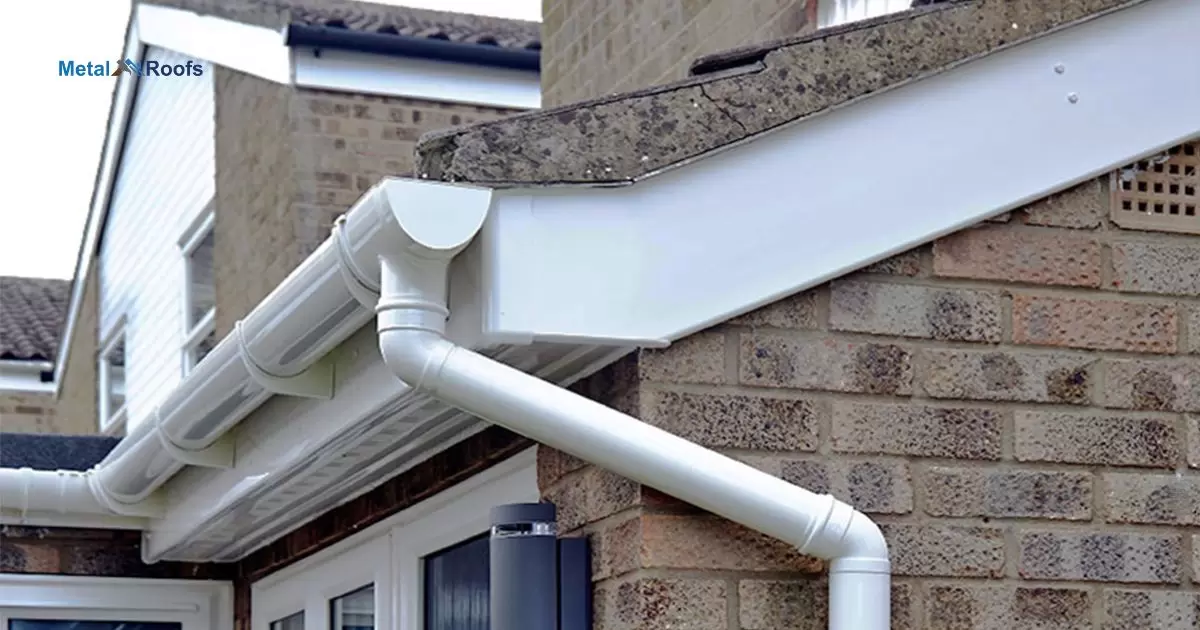Gutters pull away from your house. This is a common problem. It allows water to drain improperly. Water pools near the foundation. This can cause basement flooding. It may also lead to foundation cracks. Reattaching gutters is necessary. Professionals can secure them safely.
Imagine your home’s worst nightmare. Water pouring down near foundations. Gutter pulling away from house. Basement floods. Cracked foundations. Costly repairs. Fix it now or pay later. Call professionals to reattach gutters. Prevent water damage nightmares today.
They guide water away safely. When they detach, trouble begins. Water flows near foundations instead. This wreaks havoc on your home. Basement floods are common results. Foundation cracks may also occur due to the gap between the drip edge and gutter. Ignoring the issue is unwise.
Key Takeaways
- Address a pulling gutter promptly to prevent more damage.
- Assess the damage extent before repairs.
- Secure the gutter to the fascia board with screws or spikes.
- Repair or replace damaged fascia boards.
- Ensure proper gutter alignment and slope for drainage.
- Add supports like hangers or brackets for stability.
Improper Installation
Improper installation of gutters can lead to serious issues. If the gutter is not securely attached to the fascia board, it can sag or pull away from the house, causing water to overflow and damage the siding, foundation, or landscaping.
If the gutter is not sloped correctly, water may pool and not properly drain, leading to leaks and water damage. Proper installation is crucial to ensure that the gutter functions effectively and protects your home from water damage.
Incorrect Hanger Spacing
If your gutter is sagging or pulling away, incorrect hanger spacing could be the culprit. Assess the spacing between hangers, ensuring they’re no more than 36 inches apart. Gutter hangers should be evenly spaced to provide proper support.
If the spacing is too wide, the gutter may not be adequately supported, leading to sagging and potential damage. To remedy this issue, add more hangers where needed to distribute the weight evenly along the gutter.
Lack Of Proper Pitch
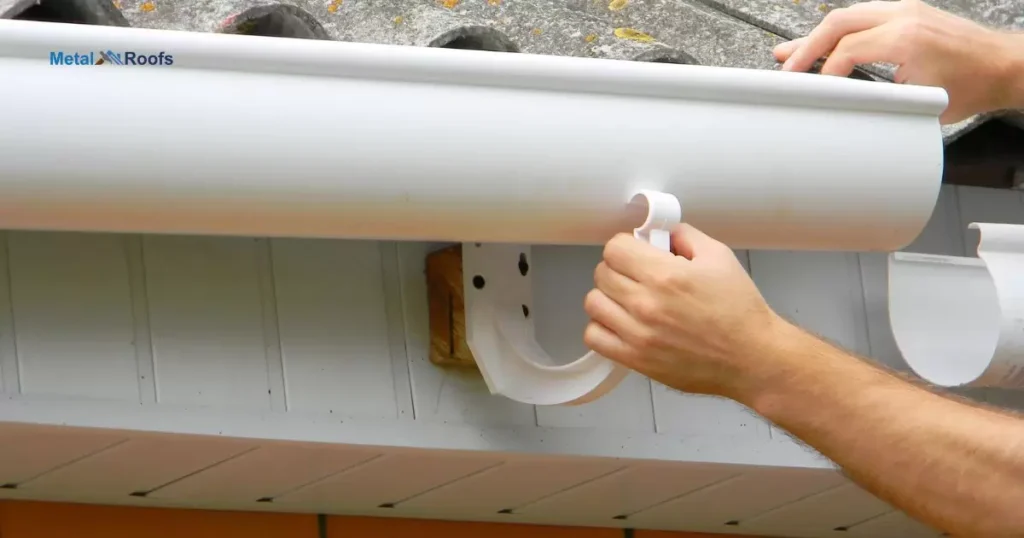
| Issue | Solution |
| Gutter doesn’t drain well | Adjust gutter slope for proper drainage |
| Water pools in gutter | Increase pitch or add additional downspouts |
| Debris accumulates easily | Clean gutters regularly to prevent blockages |
| Ice dams form in winter | Install heating cables or improve insulation |
| Risk of water damage to property | Ensure proper gutter maintenance and repair |
When gutters lack proper pitch, water can’t flow correctly. It pools, leading to overflow and damage. To fix this, ensure the gutter slopes towards the downspout. Use a level to check the angle for proper drainage.
Without the right pitch, gutters won’t work effectively. They need a slight slope to function well. Inspect your gutter’s pitch regularly to prevent issues. Adjust if necessary to keep water flowing smoothly.
Clogged Gutters
Clogged gutters are a common issue that can cause serious problems if not addressed. Leaves, twigs, and debris can accumulate in the gutter, blocking the flow of water. This can lead to water overflowing and damaging the roof, walls, and foundation of the house.
It’s important to regularly clean your gutters to prevent clogs and ensure proper drainage. Use a ladder and gloves to remove debris by hand or use a scoop and a hose for harder-to-reach areas. Regular maintenance can help you avoid costly repairs down the line.
Misaligned Gutters
When gutters are misaligned, they can cause water to overflow, damaging the house. Check for sagging gutters and realign them to slope towards the downspouts. Use a level to ensure proper alignment for effective water drainage.
Regular maintenance is key to preventing misaligned gutters. Clean debris and leaves regularly to avoid clogs that can affect alignment. Inspect the gutter system after storms or heavy rainfall for any signs of misalignment.
Inadequate Drainage
When gutters don’t drain properly, problems arise. Check for clogs or sagging sections causing the issue. Clean gutters and downspouts regularly to prevent blockages. Consider installing gutter guards for easier maintenance.
If the problem persists, consult a professional for solutions. Ensure downspouts direct water away from the foundation to prevent damage. Addressing drainage issues promptly prevents costly repairs in the future. Regular maintenance is key to keeping gutters functioning properly.
Poor Foundation Drainage
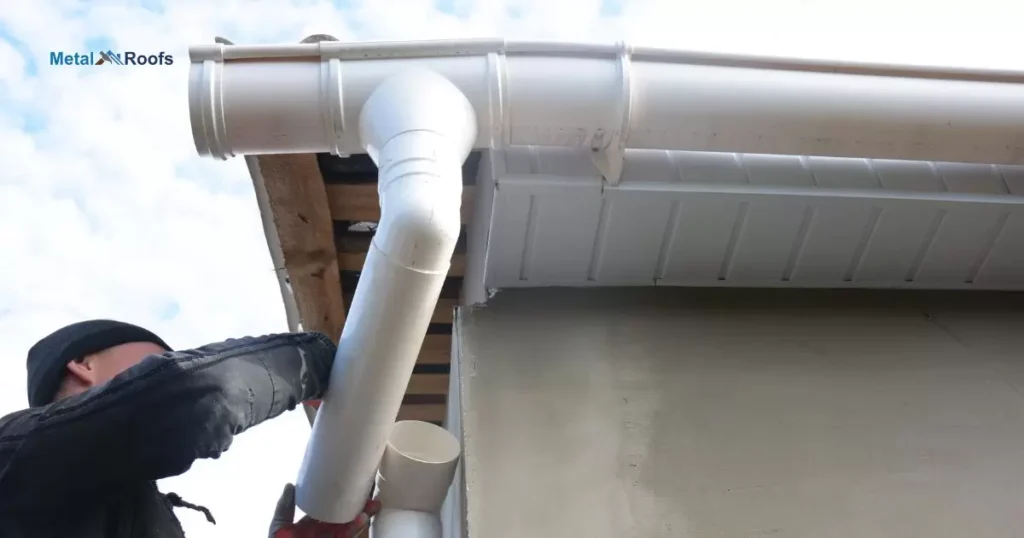
Poor foundation drainage can lead to serious issues. When water doesn’t drain properly, it can seep into the foundation, causing cracks and weakening the structure. This can lead to costly repairs and potential safety hazards.
To prevent these problems, ensure that your foundation has proper drainage. This includes installing gutters and downspouts to direct water away from the foundation. You can also consider installing a French drain or other drainage systems to manage water flow.
Gutter Guard Issues
If your gutter guard is causing problems, it’s crucial to address them promptly. Assess the issue to determine the best course of action. Common problems include clogging, poor installation, and damage. Clogs can lead to overflow and damage to your home’s foundation.
Poor installation may result in gaps where debris can enter the gutter. Damage to the gutter guard itself can reduce its effectiveness. Regular maintenance and proper installation can help prevent these issues. If you notice any problems, consider cleaning or repairing the gutter guard.
Splash Block Problems
When dealing with splash block problems, it’s vital to act fast. First, check if the splash block is properly positioned under the downspout. Next, ensure it directs water away from your home’s foundation. If the splash block is damaged or missing, replace it promptly.
A functional splash block prevents water accumulation near the foundation, avoiding potential water damage and structural issues. Regular inspection and maintenance help keep your home protected from water-related problems.
Gutter Material Durability
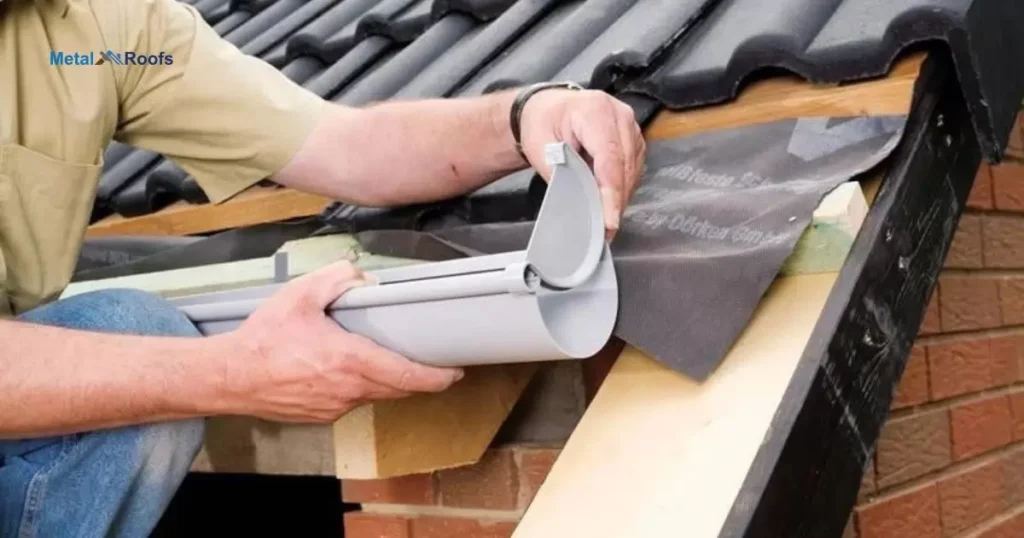
Different gutter materials offer varying levels of durability. Vinyl gutters are affordable but can crack in extreme weather. Aluminum gutters are lightweight and resist rust, making them durable choices. Steel gutters are strong but prone to rust, requiring regular maintenance.
Copper gutters are highly durable and develop a natural patina over time, adding to their charm. The durability of your gutter material depends on factors like climate and maintenance.
Gutter Cleaning And Maintenance
When it comes to gutter cleaning and maintenance, regular attention is key. Start by clearing debris like leaves and twigs from the gutter channels. Use a sturdy ladder and gloves for safety.
After cleaning, inspect the gutters for any signs of damage or clogs. Repair small leaks or loose sections promptly with sealant or screws. For clogs, use a plumber’s snake or hose to clear obstructions.
Fascia Pulling Away From House
When the fascia is pulling away from your house, it needs quick attention to avoid more damage. First, assess how bad it is before you start fixing it. Use screws or nails to reattach the fascia to the house. If the fascia is damaged, repair or replace it.
Make sure the gutter is correctly aligned and slopes toward the downspout for water to flow. You might need to add extra support, like hangers, to keep the fascia in place. Regularly check your gutters and fascia to catch issues early.
Gutter Keeps Disconnecting
If your gutter keeps disconnecting, it’s crucial to fix it quickly to prevent more problems. First, check for any loose screws or spikes along the gutter. Use a ladder to reach and tighten them securely.
If the problem persists, consider adding additional gutter hangers or brackets for extra support. Ensure the gutter is properly aligned and sloped towards the downspout for proper drainage.
How To Reattach Gutter To House?
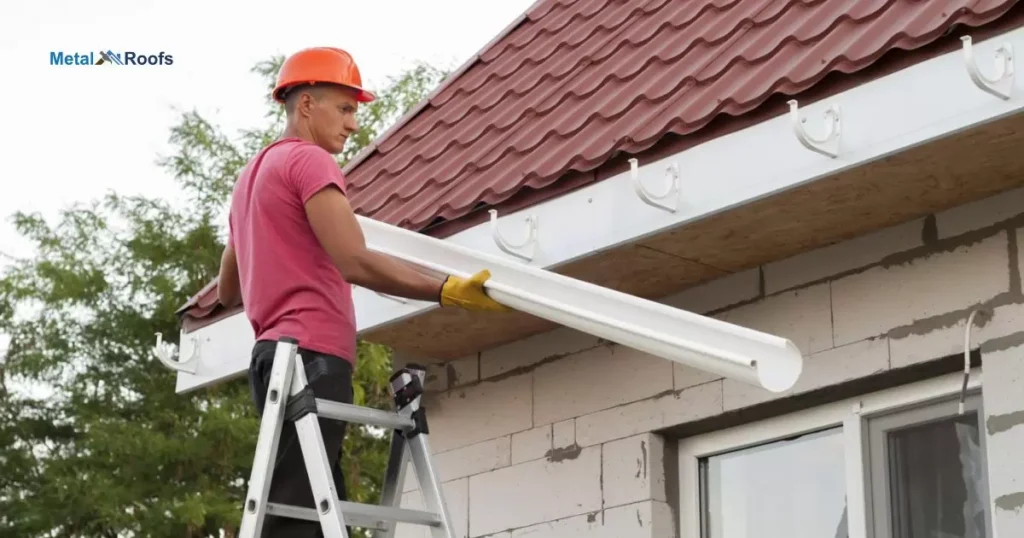
To reattach a gutter to your house, first, assess the damage. If it’s minor, secure the gutter back to the fascia board using screws or spikes. Ensure the gutter is properly aligned and sloped towards the downspout for proper drainage.
If the fascia board is damaged, repair or replace it before reattaching the gutter. Consider adding extra supports like hangers or brackets for stability. Regularly inspect and maintain your gutters to prevent future issues.
Frequently Asked Questions
Should There Be A Gap Between The Gutter And The House?
No gap between gutter and house. Gaps lead to water damage. Proper installation prevents gaps. Check for gaps in maintenance.
How Do You Fix Gutters That Are Too Close To The House?
To fix gutters too close to the house, start by assessing the alignment. Ensure a gap of at least ¼ inch for proper water flow.
How Do You Fix A Dropped Gutter?
To fix a dropped gutter, inspect, clear debris, tighten hangers, repair fascia, add support, seal leaks, ensure slope, reattach downspouts securely, and maintain regularly.
Conclusion
Gutter issues demand prompt action. Water damage risks are severe. Procrastination amplifies repair costs. Hire capable professionals immediately. Protect your valuable home investment.
Act decisively on loose gutters. Prevent basement flooding disasters. Avoid expensive foundation repairs. Peace of mind awaits. Your home deserves utmost care.
